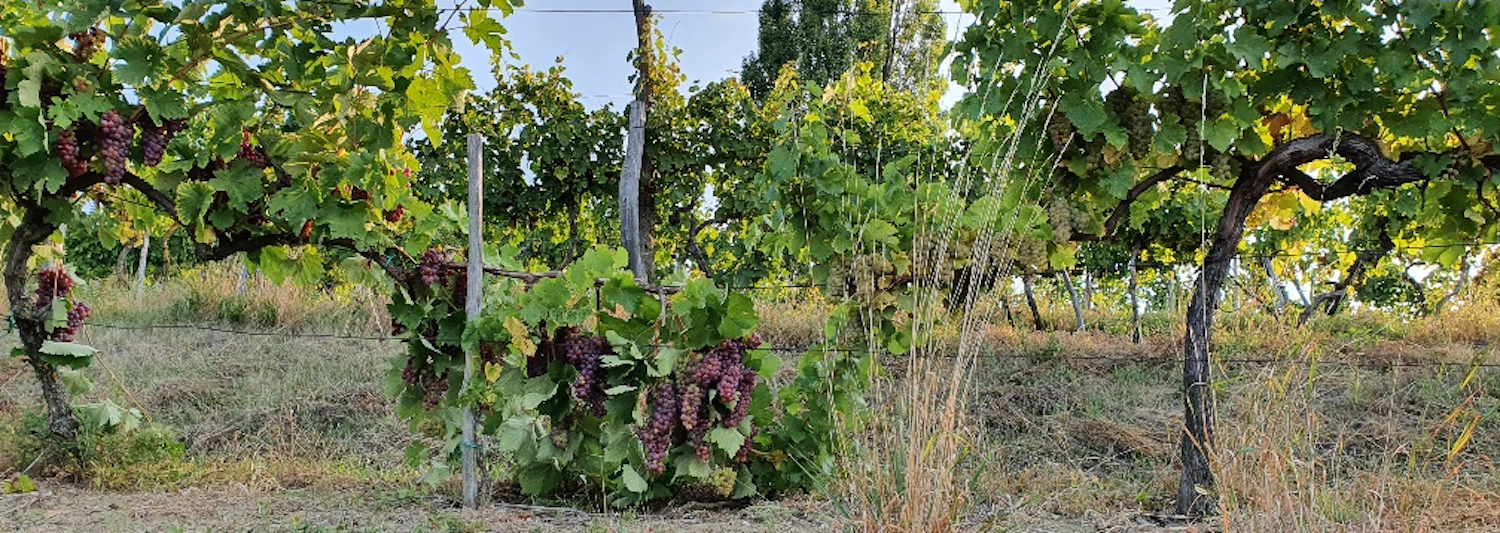

Črnko, Maribor, Slovenia
Silvo Črnko beams with happiness and so do his wines. They are universally forward and fragrant but with an elusive mineral underpinning that demands serious attention. Črnko wines are an absolute joy to drink and as appropriate for the inexperienced and curious, as the serious enthusiast.
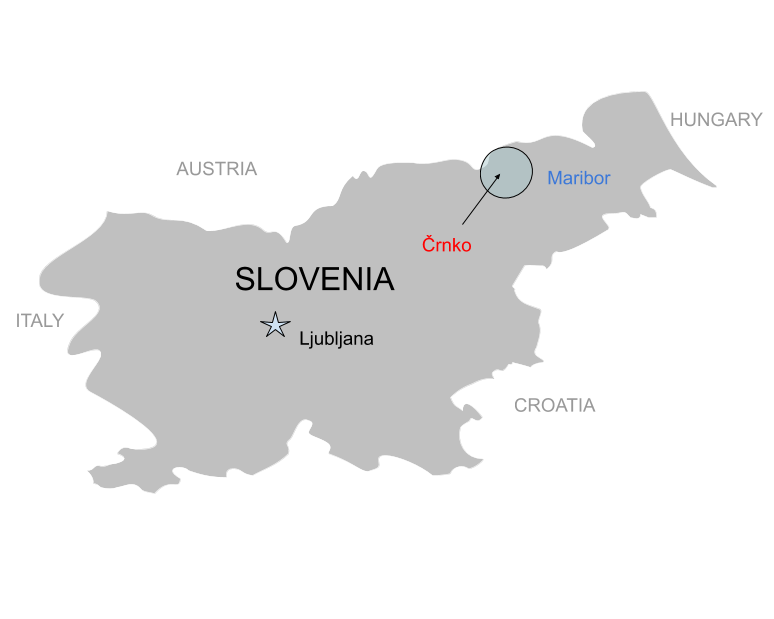
At a Glance
http://www.crnko.net/
Maribor
Continental, Alpine Influenced
Brittle marl soil
270-350m
Wine-growing hills and snowy mountains
Laški Rizling, Rhein Riesling, Sauvignon Blanc, Ravenec, Chardonnay, Pinot Blanc, Muscat
6 hectares
Sustainable
Commercial
Maribor
Continental, Alpine Influenced
Brittle marl soil
270-350m
Wine-growing hills and snowy mountains
Laški Rizling, Rhein Riesling, Sauvignon Blanc, Ravenec, Chardonnay, Pinot Blanc, Muscat
6 hectares
Sustainable
Commercial
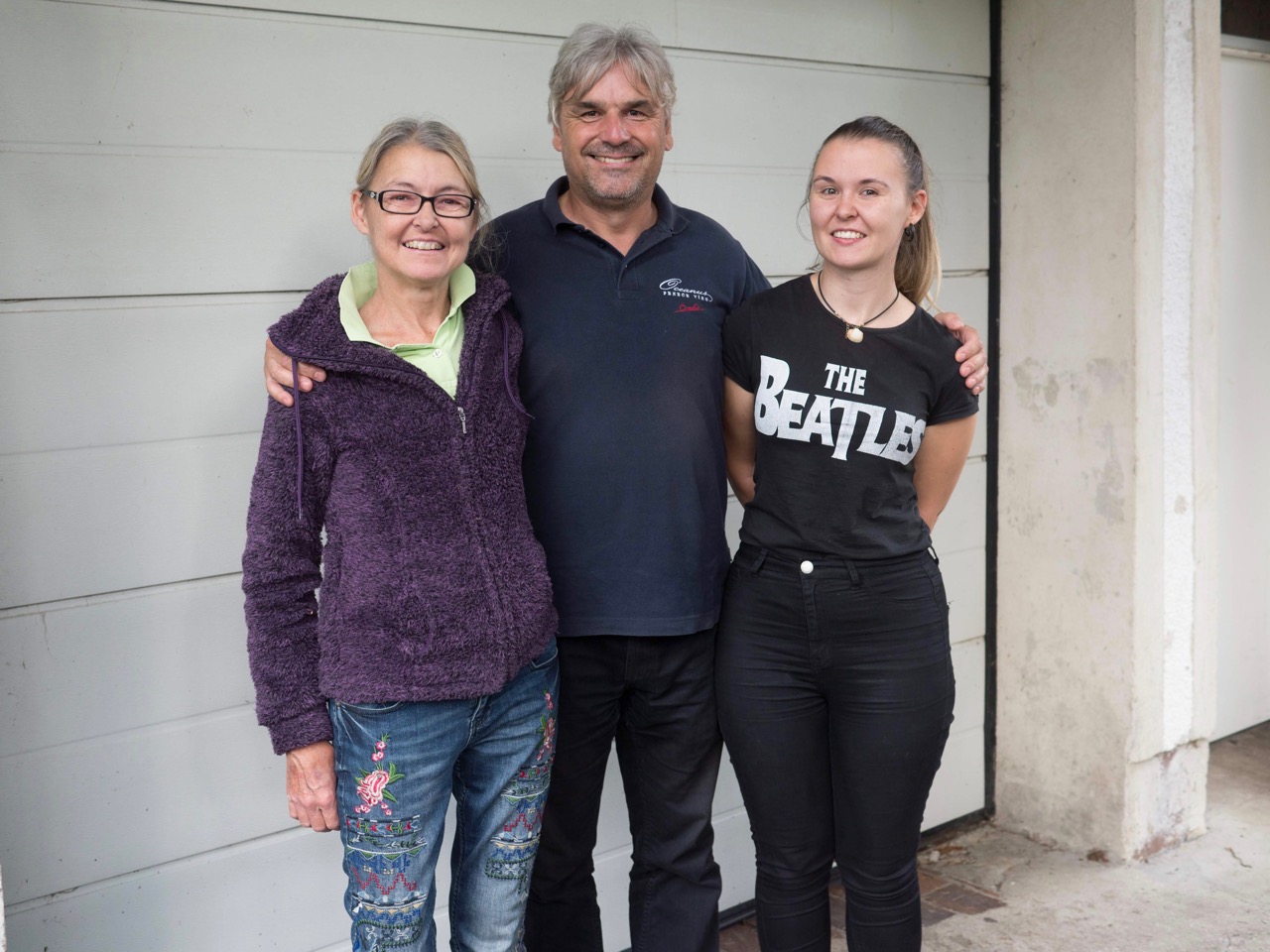
Silvo and Alenka Črnko and their daughter Tamara
The People
The Črnko farm is located on the eastern side of Slovenia, north of Maribor and just south of the Austrian border. It is a breath taking environment of endless rolling green hills lined with vineyards that stretch the length of the horizon. Until 1918, this area was known as Lower Styria (formally Austria) and had been for many centuries. Grapes have also been cultivated here for over 2,000 years in addition to famed aromatic hop fields and ethereal pumpkin seed oil; a real treat with the local wines. The rich agricultural diversity of these Slovenian Hills owes itself to fertile soils and the unique convergence of Continental, Alpine and Mediterranean climates. In large part it is the balance between these climates that make the wines of Slovenia so regional and so interesting. The bulk of Črnko’s production is divided between their line of single varietal premium bottlings and the easy drinking house cuvee Jareninčan. Small amounts of sweet wine and a sparkling wine called “Oceanus” that is aged 250 feet under the Adriatic are also produced. Not surprisingly, Silvo Črnko beams with happiness and so do his wines.
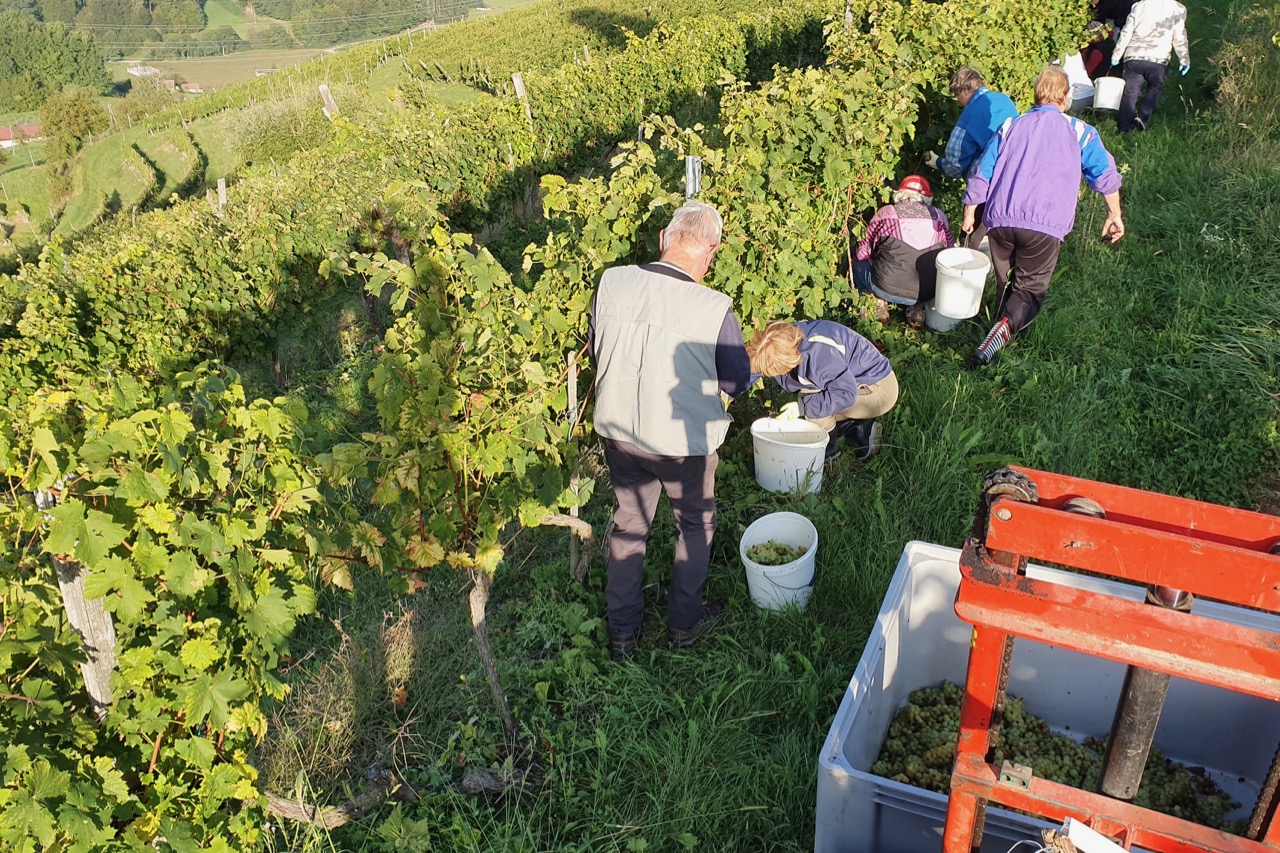
Harvest in the vineyard
Vineyards
The two south/south west facing vineyards the Črnko family farms are planted to a specific form of marl. 16 million of years ago the region was part of the Pannonian Sea and exploding with life. Today it is 2.5 miles thick of sedimentary soil. It looks a lot like slate but is brittle and silty to the touch.

Brittle marl soil
This unique soil is common to the famed vineyards of Brda, on the western side of Slovenia bordering Italy and lends the same mineral complexity to the wines, especially the whites. Jareninski Vrh is the hill the Crnko farm lies at the base of. Behind it, 3.5 hectares total of Yellow Muscat, Chardonnay, Pinot Blanc, Muscat Ottonel, Laski (Italian) Riesling, Riesling and Pinot Gris rise quickly to about 400 meter above sea level. The vineyard is pretty and steep. Even Silvo Črnko, who grows the grapes and makes the wine, gets winded during a stroll. Half a mile away is the equally steep vineyard Slatinek: 2.5 hectares of Yellow Muscat, Mueller-Thurgau, Sauvignon Blanc, Laski Riesling and Gewurztraminer.

Brittle marl soil
This unique soil is common to the famed vineyards of Brda, on the western side of Slovenia bordering Italy and lends the same mineral complexity to the wines, especially the whites. Jareninski Vrh is the hill the Crnko farm lies at the base of. Behind it, 3.5 hectares total of Yellow Muscat, Chardonnay, Pinot Blanc, Muscat Ottonel, Laski (Italian) Riesling, Riesling and Pinot Gris rise quickly to about 400 meter above sea level. The vineyard is pretty and steep. Even Silvo Črnko, who grows the grapes and makes the wine, gets winded during a stroll. Half a mile away is the equally steep vineyard Slatinek: 2.5 hectares of Yellow Muscat, Mueller-Thurgau, Sauvignon Blanc, Laski Riesling and Gewurztraminer.
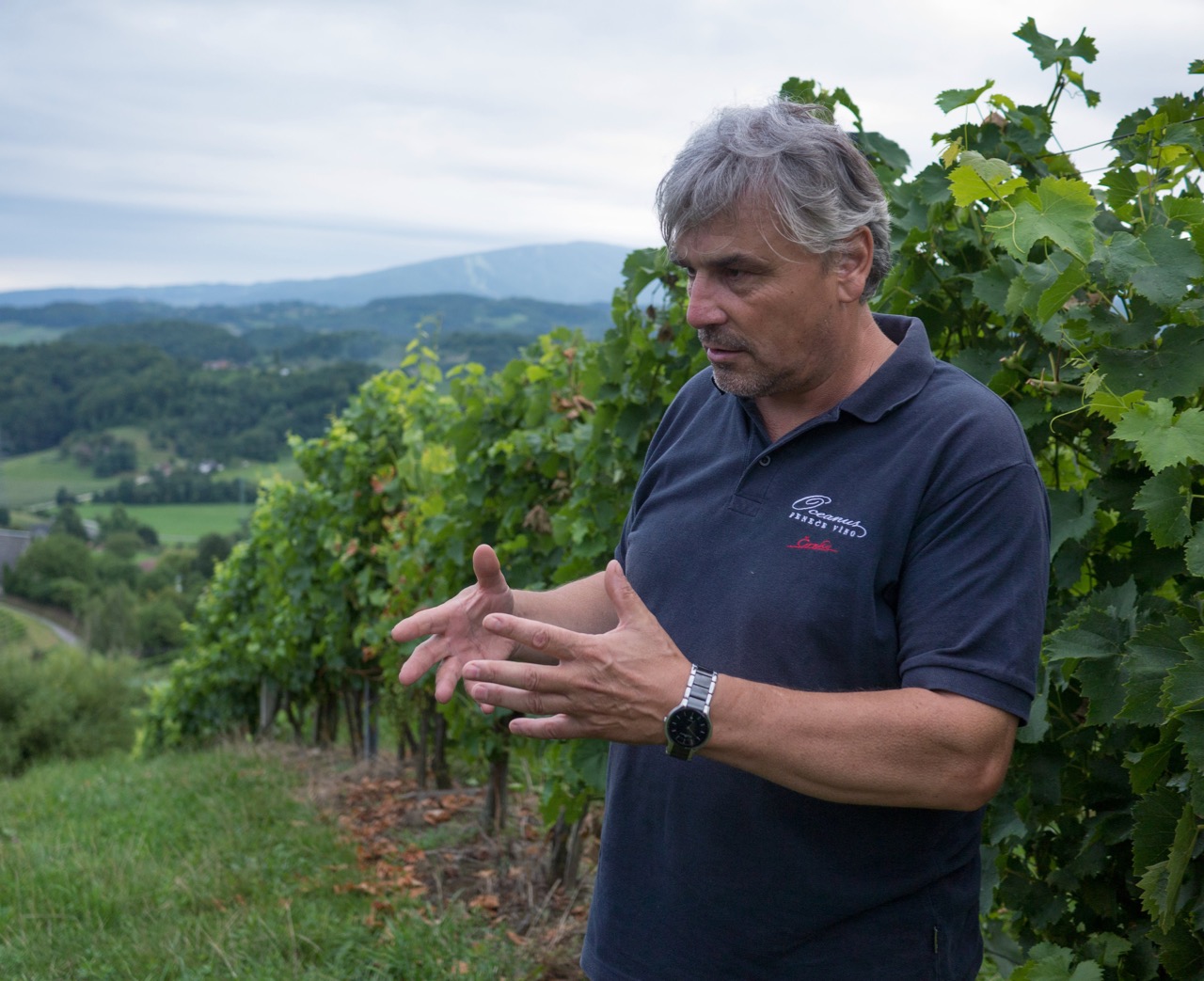
Silvo in the vineyard
Winemaking
Only estate fruit is used. Hand harvested by family and friends into small plastic bins that are then transported to the winery by tractor. Harvest is split between the best selection of grapes used to make the single variety wines. The remainder of the juice finds its way into Jarenincan. For the Jareninčan most grapes are co-fermented but others (usually the aromatic) are blended in after fermentation. Single variety wines rest briefly on the lees.

In the cellar
The Farm
Growing grapes and making wine is the main business of Silvo Črnko and his wife, Alenka but not the extent of what they do. Both are university trained agronomists who would doubtfully be content farming only one thing. So in addition to the wines, they also raise a variety of livestock for milk, meat, cheese and eggs, preserve a wide range of fruits and vegetables from their own garden and orchards and bake bread daily, from wheat they grew and milled themselves.

White Wine
Laški Rizling; Sauvignon Blanc; Ravenec;
10.9%
5.3 g/l
5.97 g/l
Laški Rizling; Sauvignon Blanc; Ravenec;
10.9%
5.3 g/l
5.97 g/l
These humble liter bottles represent half of Črnko’s total production and until the 2009 vintage had only been sold locally in the nearby village of Jarenina from where the wine takes its name. All fruit is estate grown and comes from the family’s 6 hectares of mixed white varietals planted to the regions unique marl soils and sustainably farmed. High toned Laski Riesling and Ravenec, aromatic Muscats, and a silty minerality characteristic of the estate define this vintage. Thirst quenching and light on its feet with healthy acidity also make it difficult to set down. During the summers in the village of Jarenina, locals mix it with sparkling water and then proceed to consume well into the next day.

White Wine
Laški Rizling; Sauvignon Blanc; Ravenec;
12.4%
3.2 g/l
4.83 g/l
Laški Rizling; Sauvignon Blanc; Ravenec;
12.4%
3.2 g/l
4.83 g/l
These humble liter bottles represent half of Črnko’s total production and until the 2009 vintage had only been sold locally in the nearby village of Jarenina from where the wine takes its name. All fruit is estate grown and comes from the family’s 6 hectares of mixed white varietals planted to the regions unique marl soils and sustainably farmed. High toned Laski Riesling and Ravenec, aromatic Muscats, and a silty minerality characteristic of the estate define this vintage. Thirst quenching and light on its feet with healthy acidity also make it difficult to set down. During the summers in the village of Jarenina, locals mix it with sparkling water and then proceed to consume well into the next day.

Sparkling Wine
Chardonnay; Pinot Blanc;
11.2%
3.5 g/l
5.74 g/l
Chardonnay; Pinot Blanc;
11.2%
3.5 g/l
5.74 g/l
One of the many joys of visiting the Črnko family is opening up a bottle of Oceanus. Started in 2009, Silvo was the first in the EU to age his sparkling wines in the ocean. More specifically, for five years sixty feet down in the Bay of Piran. Constant temperature, the tides did the riddling, and famously, there’s no oxygen. Tamara, Silvo’s daughter, was the driving force behind this project. A well seasoned and passionate diver, this was a way to keep her active in the family winery and do something really special. Unfortunately, due to the bottles being covered in sea creatures, we cannot import them. While we still hope to get some Oceanus in stock someday, but now at least we have a baby version for the very first time while we wait. 70% Chardonnay and 30% Pinot Blanc, they are fermented separately and then blended in the early Spring. Second fermentation started in March 2023 followed by two years racked and riddled on the lees. No liquor, extra brut, and non disgorged, meaning a “Col Fondo” style where the fine lees are integrated into the wine. Cloudy, richer texture, but with traditional method size bubbles. It’s a tweener between the yeastiness in a Pét-nat, but with the age and refinement of a traditional method.

White Wine
Yellow Muscat; Muskat Ottonel;
10.7%
2.9 g/l
6.38 g/l
Yellow Muscat; Muskat Ottonel;
10.7%
2.9 g/l
6.38 g/l
We’re always looking at ways to build upon our long partnership with the Črnko family. Here is one such experiment. While the Jareninčan is a field blend, there are often blending components that don’t make the cut. Silvo has also wanted to experiment with longer skin macerations. Two weeks on the skins in open vats followed by spontaneous fermentation in a 50 year-old 500L Slovenian used barrel. 90% Yellow Muscat and 10% Muscat Ottonel. This is the same fruit material that he ferments 22 meters deep in the ocean for 1624 days. It can handle a lot. We tasted an early example back in April of 2022 alongside one of the best Domača goveja juha (homemade beef stew) we’ve ever had.